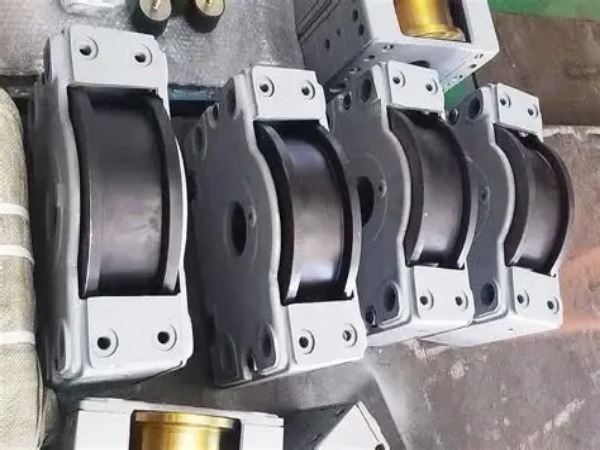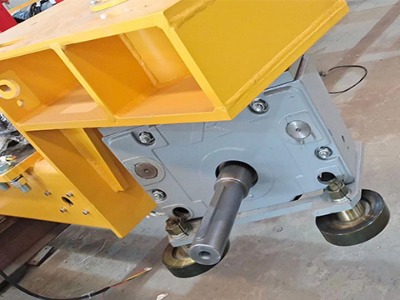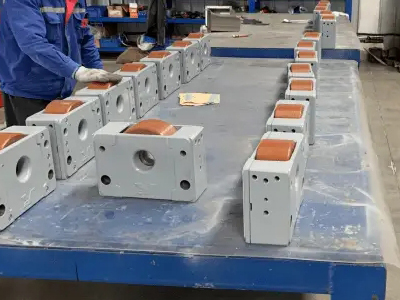DRS Wheel Blocks Boost Crane Efficiency and Cut Maintenance
The Demag DRS wheel block system is a core component in industrial cranes, gantries, and material handling equipment. Its advanced design ensures high reliability, precision, and adaptability, directly improving operational efficiency while reducing downtime and maintenance costs.

1. Smooth and Stable Motion
The DRS wheel block system is engineered for low-friction travel and minimal vibration, using high-precision bearings and optimized wheel profiles.
Technical Advantage: Wheels maintain continuous rail contact, absorbing minor misalignments without impacting motion.
Operational Impact: Cranes can travel at consistent speeds even under heavy loads, reducing the start-stop cycles that slow material handling.
Application Example: In high-throughput warehouses, the smooth motion allows multiple cranes to operate in close proximity without causing vibrations that would otherwise disrupt automated conveyor systems.
2. High Load Capacity
Designed to carry extremely heavy loads, the system employs multi-wheel configurations with load distribution optimized to prevent overloading of individual wheels.
Technical Advantage: The wheel blocks are constructed from ductile iron or high-strength alloys, providing excellent wear resistance and deformation tolerance.
Operational Impact: Systems can transport oversized or heavy cargo efficiently without slowing down.
Application Example: In port container handling, DRS-equipped cranes move fully loaded containers faster, maintaining high scheduling accuracy and avoiding bottlenecks.
3. Modular and Flexible Design
The modularity of the DRS wheel block system allows easy replacement and configuration, reducing downtime during maintenance or system upgrades.
Technical Advantage: Individual modules or wheels can be swapped without dismantling the entire crane travel system. Rail adapters and variable wheel spacing allow integration into different layouts.
Operational Impact: Reduces service interruptions and allows rapid deployment for new projects or expansions.
Application Example: Factories upgrading their crane systems for heavier production lines can implement DRS modules without halting operations, maintaining consistent workflow.
4. Durable, Low-Maintenance Components
The DRS wheel block uses sealed bearings and corrosion-resistant wheels, reducing exposure to dust, debris, and moisture.
Technical Advantage: Sealed bearings extend service life and reduce lubrication requirements. Ductile iron wheels resist deformation and abrasion.
Operational Impact: Lower maintenance frequency translates to higher uptime and reduced lifecycle costs.
Application Example: In outdoor or harsh industrial environments, such as steel mills, the system continues running reliably despite extreme conditions.
5. Precise Alignment and Reliability
Accurate wheel placement ensures consistent rail alignment and prevents misalignment, uneven wear, or system jams.
Technical Advantage: The system maintains exact positioning through precision-engineered housings and adjustable wheel blocks.
Operational Impact: Continuous, predictable travel keeps production lines moving smoothly.
Application Example: Automated assembly lines benefit from reliable crane travel, reducing delays in synchronized operations.
Conclusion
In summary, the Demag DRS wheel block system enhances material handling efficiency through smooth motion, high load capacity, modular flexibility, durability, and precise alignment. Its combination of advanced engineering and practical design allows industries to achieve faster transport of materials, minimized downtime, lower maintenance costs, and reliable operations. For high-performance cranes, gantries, and automated material handling systems, the DRS wheel block system is a critical factor in operational excellence.
For detailed technical support or application-specific recommendations, please contact our engineering team.




